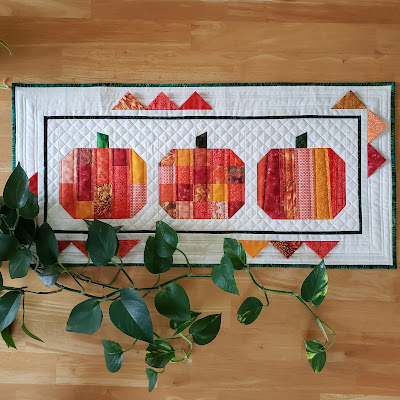This little tool came packaged with a magazine years ago. It sat in a drawer, unused and unappreciated, for years. Now it's the tool I reach for most often after my rotary cutter and rulers.
It's a corner trimmer. When it first arrived in the mail with that magazine, I thought it was only useful for trimming triangles to make HST the traditional way from two triangles. Since I didn't much care for making HST that way, I tucked the tool away and forgot about it. Years later I found it while reorganizing my stuff. I paused to read the instruction booklet. Now the tool is never tucked away.
I still don't use it to make make HST, but I fully appreciate it to trim any other 45 degree point. It takes all the guesswork out of lining up a triangle with another shape. No more eyeballing if the pointy tip sticks out just enough past the other shape for the seam allowances to line up. I took pictures today to show you.
- joining binding strips to avoid marking the diagonal seams
- joining the binding tails while binding a quilt (scroll down about 2/3 of the way down this post to see how)
- adding setting triangles to an on-point setting (trimming points lets me position them precisely, so I can pin them in place and avoid any inadvertent stretching or distorting of the bias edges in the triangle)
- sewing a triangles to a square or rectangle














.jpg)